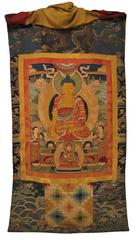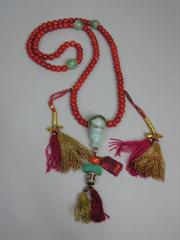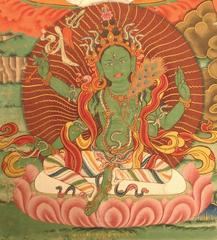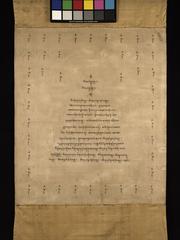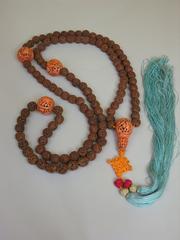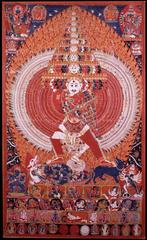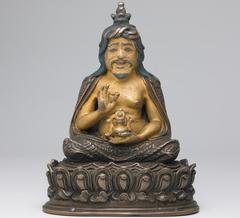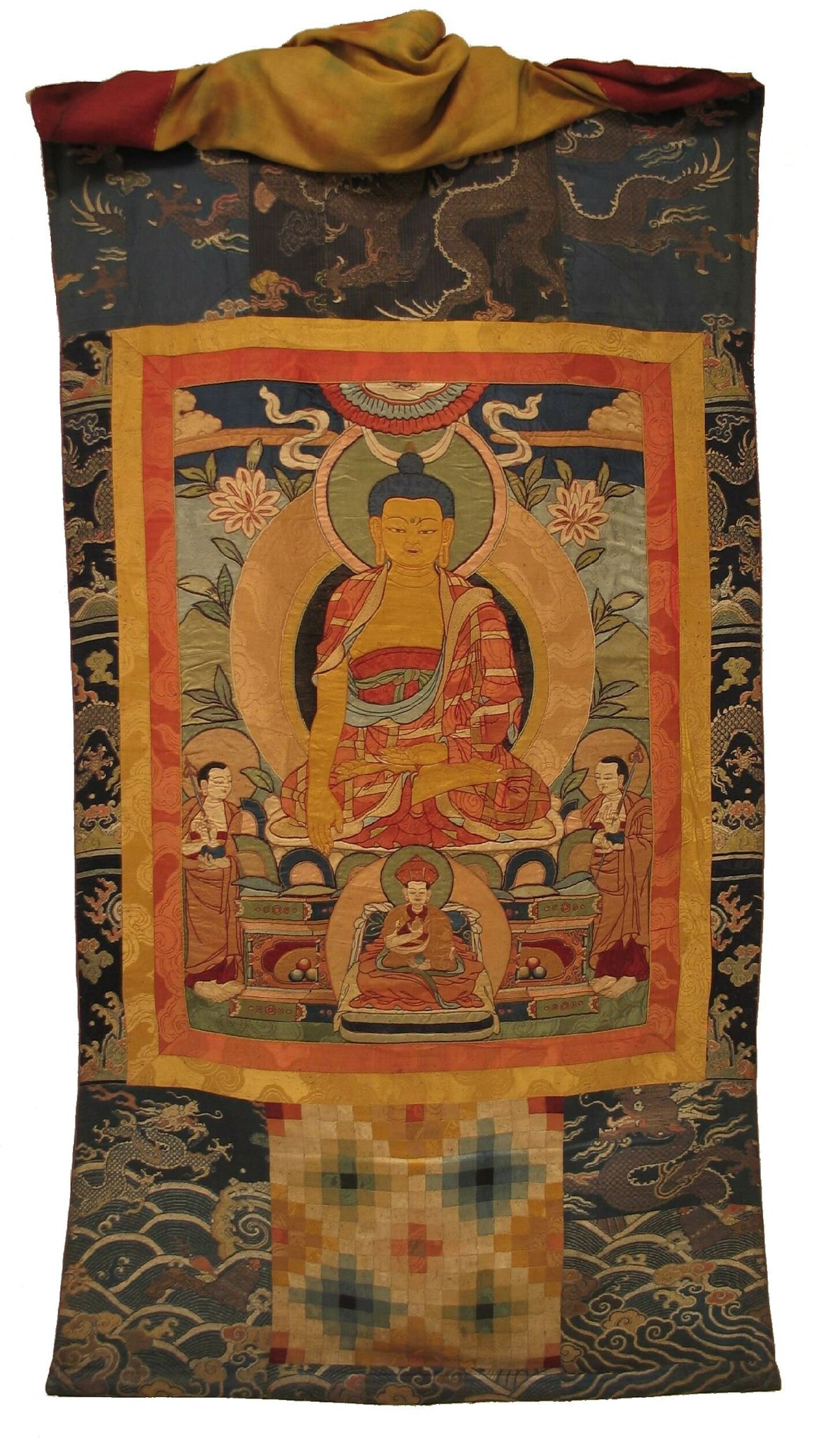
Rubin Museum of Art New York City: Visiting Hours, Tickets, and Complete Guide
Date: 14/06/2025
Introduction
The Rubin Museum of Art, formerly located in Manhattan’s Chelsea neighborhood, is celebrated as a premier institution dedicated to Himalayan art and culture. Since its founding in 2004 by Donald and Shelley Rubin, the museum amassed an outstanding collection of nearly 4,000 objects spanning 1,500 years. Showcasing works from Tibet, Nepal, Bhutan, India, and the wider Himalayan region, the Rubin offered visitors an immersive experience into the region’s spiritual and artistic heritage, most notably through its Tibetan Buddhist Shrine Room and innovative exhibitions.
Following the closure of its physical space at 150 West 17th Street in October 2024, the Rubin Museum transitioned to a “museum without walls” model. This agile approach allows the museum’s renowned collection to reach broader audiences via traveling exhibitions, institutional partnerships, and digital resources. Visitors can now explore Rubin highlights at venues like the Brooklyn Museum, participate in public art projects, and access robust online programs.
This detailed guide provides essential information about the Rubin Museum’s visiting hours, ticketing, accessibility, historical significance, and current ways to engage with its collection and programs. Whether you’re seeking an in-person art experience at partner institutions or wish to discover Himalayan culture online, the Rubin Museum continues its mission to inspire and educate. For the latest details and digital offerings, visit the official Rubin Museum website (Collection Highlights).
Contents
- About the Rubin Museum: History & Transformation
- Visiting Today: Partner Venues, Hours, and Admission
- Accessibility and Visitor Amenities
- Collection Overview & Signature Installations
- Noteworthy Exhibitions and Programs
- Digital Resources and Traveling Exhibitions
- Frequently Asked Questions (FAQ)
- Practical Travel Tips and Contact Information
- Sources & Further Reading
About the Rubin Museum: History & Transformation
Founding and Legacy
Opened in 2004, the Rubin Museum of Art was established to showcase the Rubins’ extraordinary Himalayan art collection, one of the most significant outside Asia. Housed in a former Barney’s department store repurposed by architects Celia Imrey and Tim Culbert, the museum’s design drew inspiration from Tibetan architecture, with five gallery floors and a distinctive glass spiral staircase.
The Rubin became a center for cross-cultural understanding, presenting exhibitions, educational programs, and public events that fostered dialogue between Himalayan traditions and contemporary audiences. The museum’s approach emphasized both the aesthetic beauty and the living spiritual significance of the works on view.
Transition to a Museum Without Walls
In October 2024, the Rubin closed its Chelsea building, reimagining itself as a decentralized institution. Through partnerships with museums like the Brooklyn Museum and traveling exhibitions across the U.S., the Rubin extends its reach. Its robust digital resources, including virtual tours and educational platforms, further democratize access to Himalayan art and scholarship.
(Rubin Museum Transition Overview)
Visiting Today: Partner Venues, Hours, and Admission
Key Partner Venues
- Brooklyn Museum (200 Eastern Parkway, Brooklyn, NY 11238): Home to the Tibetan Buddhist Shrine Room from June 2025, plus other Rubin highlights within the Arts of Asia galleries.
- Traveling Exhibitions: Rubin shows appear at institutions such as the Utah Museum of Fine Arts and Worcester Art Museum.
Visiting Hours
Brooklyn Museum:
- Wednesday–Sunday: 11:00 AM – 6:00 PM
- Thursday: Open until 10:00 PM
- Closed Mondays and Tuesdays
Check individual partner venues for specific hours and special events.
Admission
- Brooklyn Museum: General admission is $16; seniors and students $10; children under 19 are free. Admission to special Rubin exhibitions may have separate fees.
- Traveling Exhibitions: Ticketing policies vary by host institution; consult the relevant museum’s website.
- Digital Programs: Many online resources and virtual tours are free or pay-what-you-can.
Tickets are best purchased online in advance to secure entry and preferred time slots.
Accessibility and Visitor Amenities
Accessibility Features
- Wheelchair Access: All partner institutions and Rubin’s former Chelsea site are wheelchair accessible.
- Assistive Services: Hearing assistive devices, large-print guides, and service animal access are available.
- Digital Accessibility: The Rubin’s online resources are screen reader compatible, with video captions and downloadable content.
Visitor Amenities
- Audio Guides: The Bloomberg Connects app provides free audio guides and exhibition information.
- Guided Tours: Available at partner venues and by appointment; meditation and educational programs continue at locations like the New York Insight Meditation Center.
- Family Programming: Interactive activities (such as the Mandala Lab) and Sunday workshops are designed for all ages.
(Rubin Museum Accessibility Overview)
Collection Overview & Signature Installations
Collection Highlights
The Rubin’s collection includes thangkas (scroll paintings), sculptures, textiles, ritual implements, manuscripts, photographs, and multimedia works, reflecting Buddhist, Hindu, Bon, and indigenous traditions from the Himalayan region. The museum’s curatorial focus presents these objects as both works of art and living elements of ongoing spiritual practice.
(Collection and Exhibits Highlights)
Signature Installation: Tibetan Buddhist Shrine Room
The Tibetan Buddhist Shrine Room, a visitor favorite since its debut in 2013, recreates a traditional household shrine environment filled with thangkas, bronze figures, ritual implements, musical instruments, and ceremonial furniture. This multisensory installation now resides at the Brooklyn Museum, offering an immersive window into Tibetan Buddhist devotional life.
(Rubin Shrine Room History)
(CNN Travel)
Noteworthy Exhibitions and Programs
The Rubin Museum is acclaimed for thematic exhibitions that blend historical and contemporary perspectives.
- Death Is Not the End (2023): Explores concepts of death, rebirth, and the afterlife across cultures (Side of Culture).
- Reimagine: Himalayan Art Now (2024): Features 32 contemporary artists from the Himalayan region and diaspora, marking the Rubin’s 20th anniversary (Secret NYC).
- The Power of Intention (2019): Examines the Buddhist prayer wheel tradition in contemporary art.
Public programs include weekly Mindfulness Meditation sessions, family workshops, artist talks, and performances, fostering community engagement and cross-cultural learning.
Digital Resources and Traveling Exhibitions
Online Collection and Education
- Project Himalayan Art: An open-access digital platform for students, educators, and researchers (Project Himalayan Art).
- Virtual Exhibitions & Podcasts: Interactive tours and multimedia content expand access globally.
Traveling Exhibitions
Select objects and exhibitions circulate at partner museums, ensuring continued public access outside New York City. The Shrine Room’s installation at the Brooklyn Museum is a prime example of this outreach.
Frequently Asked Questions (FAQ)
Q: Where can I see the Rubin Museum collection now?
A: Key works, including the Tibetan Buddhist Shrine Room, are at the Brooklyn Museum and in traveling exhibitions. Visit the Rubin Museum’s website for current locations.
Q: Is the Rubin Museum accessible?
A: Yes. All partner venues and digital resources are designed with accessibility in mind.
Q: How do I get tickets?
A: Purchase tickets for in-person exhibitions via the partner institution’s website. Many digital programs are free.
Q: Are there guided tours and family programs?
A: Yes. Guided tours, meditation sessions, and family workshops are available at partner venues and online.
Q: How can educators or researchers access Rubin resources?
A: Through Project Himalayan Art and the museum’s digital archives.
Practical Travel Tips and Contact Information
- Transportation: Use subway lines and buses for easy access to the Brooklyn Museum and other partner venues. Parking is available but limited.
- Best Times to Visit: Midweek or early hours are ideal to avoid crowds.
- Digital Access: Download the Bloomberg Connects app for enhanced on-site and remote experiences.
- Contact:
- General: 212.620.5000
- Box Office: 212.620.5000 x344 | [email protected]
- Rubin Museum Website
Sources & Further Reading
- Rubin Museum of Art Visiting Hours, Tickets, History & New York Historical Sites, 2025, Rubin Museum Official Guide (https://rubinmuseum.org/)
- Collection and Exhibits Highlights, 2025, Rubin Museum Collection Overview (https://rubinmuseum.org/our-collection/highlights/)
- Rubin Museum Visiting Hours, Tickets, and Accessibility Guide - New York Historical Site, 2025, Rubin Museum Accessibility Overview (https://rubinmuseum.org/)
- Rubin Museum Transition: Visiting Hours, Tickets, and What to Expect After Closure, 2024-2025, Rubin Museum Transition Overview (https://rubinmuseum.org/projects-exhibitions/exhibitions/)
- CNN Travel, 2025, Tibetan Buddhist Shrine Room at Brooklyn Museum (https://www.cnn.com/travel/global-tourist-attractions-closed-2025/index.html)
- Side of Culture, 2023, “Death Is Not the End” Exhibition Review (https://sideofculture.com/2023/05/rubin-museum-of-art/)
- Secret NYC, 2024, Rubin Museum Final Chelsea Show Coverage (https://secretnyc.co/the-rubin-museum-to-close-in-fall-2024/)
For the latest news, digital experiences, and exhibition schedules, be sure to visit the Rubin Museum’s official website, subscribe to their newsletter, and follow them on social media. Download the Audiala app for personalized audio tours, and explore related articles on New York’s top cultural destinations to enhance your journey.
